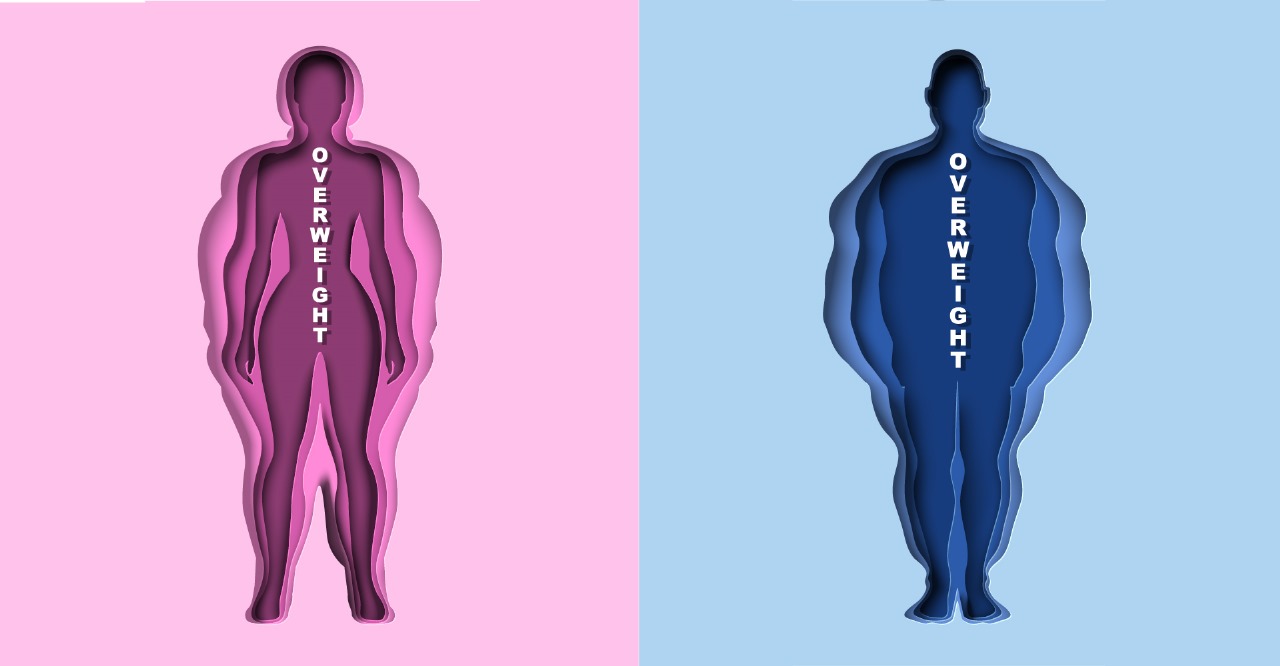Body Fat Calculator – Estimate Your Body Fat Percentage Accurately
Calculate your body fat percentage using the US Navy method with accurate body measurements
What is a Body Fat Calculator?
A body fat calculator is a scientific tool that estimates your body fat percentage using body measurements and proven formulas. Our free body fat calculator uses the US Navy method, which is one of the most accurate non-invasive techniques for calculating body fat percentage. This method requires only basic body measurements like height, weight, neck, waist, and hip circumference to provide reliable results.
The US Navy method was developed by the U.S. Navy to assess body composition in military personnel and has been validated through extensive research. It provides 85-90% accuracy compared to clinical methods like DEXA scans, making it an excellent tool for tracking body composition changes over time.

How Does Our Body Fat Calculator Work?
• Uses height, neck, and waist measurements
• Formula: 495 / (1.0324 - 0.19077 × log₁₀(waist - neck) + 0.15456 × log₁₀(height)) - 450
• Accounts for male body frame differences
• No hip measurement required
• 85-90% accuracy for most men
• Uses height, neck, waist, and hip measurements
• Formula: 495 / (1.29579 - 0.35004 × log₁₀(waist + hip - neck) + 0.221 × log₁₀(height)) - 450
• Accounts for female body composition differences
• Hip measurement essential for accuracy
• 85-90% accuracy for most women
Understanding Body Fat Percentage Categories
Essential Fat (2-5%): Minimum fat for survival, only in elite athletes temporarily
Athletes (6-13%): Typical range for competitive male athletes with visible muscle definition
Fitness (14-17%): Lean and healthy appearance, ideal for fitness enthusiasts
Average (18-24%): Typical range for average men, generally healthy
Obese (25%+): Higher health risk category, requires attention
Essential Fat (10-13%): Minimum fat for reproductive health, rarely maintained long-term
Athletes (14-20%): Typical for competitive female athletes, lean with muscle definition
Fitness (21-24%): Healthy and attractive appearance, ideal for active women
Average (25-31%): Normal range for most women, healthy for reproductive function
Obese (32%+): Higher health risk category, may affect quality of life
Body Fat Calculation Examples
Age: 28 years
Height: 180 cm (5'11")
Weight: 80 kg (176 lbs)
Neck: 38 cm (15")
Waist: 78 cm (30.7")
Body Fat: 12.5%
Category: Athletes
Age: 32 years
Height: 165 cm (5'5")
Weight: 60 kg (132 lbs)
Neck: 32 cm (12.6")
Waist: 70 cm (27.6")
Hip: 95 cm (37.4")
Body Fat: 22.8%
Category: Fitness
Age: 40 years
Height: 175 cm (5'9")
Weight: 85 kg (187 lbs)
Neck: 40 cm (15.7")
Waist: 95 cm (37.4")
Body Fat: 21.2%
Category: Average
Why Use a Body Fat Calculator?
- • Disease Risk Assessment: Higher body fat increases chronic disease risk
- • Fitness Progress Tracking: Monitor body composition changes over time
- • Health Goal Setting: Set realistic body fat percentage targets
- • Nutritional Planning: Adjust diet based on body composition
- • Exercise Optimization: Tailor workouts for body fat reduction
- • Weight Loss Monitoring: Track fat loss vs muscle loss
- • Muscle Building: Ensure muscle gain without excess fat
- • Athletic Performance: Optimize body composition for sports
- • Health Screening: Regular monitoring for health maintenance
- • Medical Assessment: Healthcare providers use for evaluation
How to Take Accurate Body Measurements
- • Height: Measure without shoes on flat surface, stand straight
- • Weight: Use calibrated scale, weigh at same time consistently
- • Neck: Measure just below Adam's apple, tape snug but not tight
- • Waist: Measure at narrowest point, usually above belly button
- • Hip (Women): Measure at widest point, around hip bone level
- • Consistent Timing: Take measurements at same time of day
- • Proper Posture: Stand straight with normal breathing
- • Quality Tools: Use flexible measuring tape, not rigid ruler
- • Record Precisely: Note measurements to nearest 0.1 cm or 0.25 inch
- • Multiple Readings: Take 2-3 measurements and average them
Body Fat vs. BMI: Understanding the Difference
- • What it Measures: Actual fat tissue percentage
- • Accuracy: More accurate for body composition
- • Athletes: Better assessment for muscular individuals
- • Health Indicator: Direct measure of fat-related health risks
- • Limitations: Requires more measurements and calculations
- • What it Measures: Weight relative to height
- • Accuracy: Less accurate for body composition
- • Athletes: May misclassify muscular individuals
- • Health Indicator: General screening tool only
- • Limitations: Doesn't distinguish muscle from fat
Healthy Body Fat Ranges by Age
• 20-29 years: 8-20% (optimal: 11-15%)
• 30-39 years: 11-22% (optimal: 12-16%)
• 40-49 years: 13-24% (optimal: 14-18%)
• 50-59 years: 15-26% (optimal: 16-20%)
• 60+ years: 17-28% (optimal: 18-22%)
• 20-29 years: 16-25% (optimal: 18-22%)
• 30-39 years: 17-26% (optimal: 19-23%)
• 40-49 years: 19-28% (optimal: 21-25%)
• 50-59 years: 21-30% (optimal: 23-27%)
• 60+ years: 23-32% (optimal: 25-29%)
Strategies for Reducing Body Fat
- • Caloric Deficit: Consume fewer calories than burned
- • Protein Intake: Maintain muscle mass during fat loss
- • Whole Foods: Focus on unprocessed, nutrient-dense foods
- • Hydration: Drink adequate water for metabolism
- • Meal Timing: Consider intermittent fasting approaches
- • Resistance Training: Build and maintain muscle mass
- • Cardiovascular Exercise: Burn calories and improve heart health
- • High-Intensity Intervals: Efficient fat burning workouts
- • Consistency: Regular exercise schedule for best results
- • Progressive Overload: Gradually increase exercise intensity
- • Sleep Quality: 7-9 hours of quality sleep nightly
- • Stress Management: Reduce cortisol through relaxation
- • Activity Levels: Increase daily movement and steps
- • Social Support: Build supportive environment
- • Patience: Sustainable fat loss takes time
Frequently Asked Questions
The US Navy method used in this calculator is 85-90% accurate, making it one of the most reliable measurement-based methods. While not as precise as DEXA scans (98-99% accuracy), it provides excellent estimates for tracking progress and health assessment.
For general health monitoring, monthly measurements are sufficient. If actively trying to change body composition, weekly measurements can help track progress, but daily fluctuations are normal and not meaningful. Focus on long-term trends rather than daily variations.
The US Navy method works well for most body types, including muscular individuals. However, extremely muscular people may get slightly higher readings since the method doesn't distinguish between muscle and fat tissue. It's still useful for tracking changes over time.
Healthy ranges vary by age and gender. Generally, men should aim for 10-20% and women 16-25%, with slight increases acceptable with age. Refer to the age-specific ranges provided above for more detailed guidance based on your specific age group.
Women naturally store more fat in the hip area due to hormonal differences and reproductive functions. The hip measurement is essential for accurately calculating female body fat percentage using the US Navy method, as it accounts for this gender-specific fat distribution pattern.
Body Fat Measurement Methods Comparison
• US Navy Method: 85-90% accuracy (this calculator)
• Body Fat Scales: 80-85% accuracy, affected by hydration
• Skinfold Calipers: 75-85% accuracy, skill dependent
• Measuring Tape: 70-80% accuracy, various formulas
• Visual Estimation: 60-70% accuracy, highly subjective
• DEXA Scan: 98-99% accuracy (gold standard)
• Hydrostatic Weighing: 95-98% accuracy, underwater weighing
• Air Displacement: 95-97% accuracy, Bod Pod method
• Professional BIA: 90-95% accuracy, medical grade
• Ultrasound: 85-90% accuracy, measures fat thickness
Health Implications of Body Fat Levels
- • Hormonal Imbalances: Disrupted hormone production
- • Immune System: Weakened immunity and increased infection risk
- • Bone Health: Increased risk of osteoporosis
- • Reproductive Health: Menstrual irregularities in women
- • Temperature Regulation: Difficulty maintaining body temperature
- • Cardiovascular Disease: Increased heart disease risk
- • Type 2 Diabetes: Insulin resistance and diabetes risk
- • High Blood Pressure: Hypertension development
- • Sleep Apnea: Breathing problems during sleep
- • Joint Problems: Increased stress on joints
Body Fat and Athletic Performance
Optimal Range:
• Men: 5-12%
• Women: 12-19%
Benefits:
• Improved power-to-weight ratio
• Enhanced endurance capacity
• Better heat dissipation
Optimal Range:
• Men: 8-15%
• Women: 15-22%
Benefits:
• Adequate energy reserves
• Joint protection
• Hormonal balance
Competition Range:
• Men: 3-8%
• Women: 10-16%
Considerations:
• Temporary for competitions
• Requires careful monitoring
• May affect health if sustained
Related Health & Fitness Calculators
Calculate your Body Mass Index for general health assessment
Calculate BMICalculate your Basal Metabolic Rate for daily calorie needs
Calculate BMRFind your ideal weight range based on height and body frame
Calculate Ideal WeightThis body fat calculator provides general health information and should not replace professional medical advice. Consult qualified healthcare providers for personalized body composition assessment, especially if you have underlying health conditions, eating disorders, or are pursuing extreme body composition goals.
